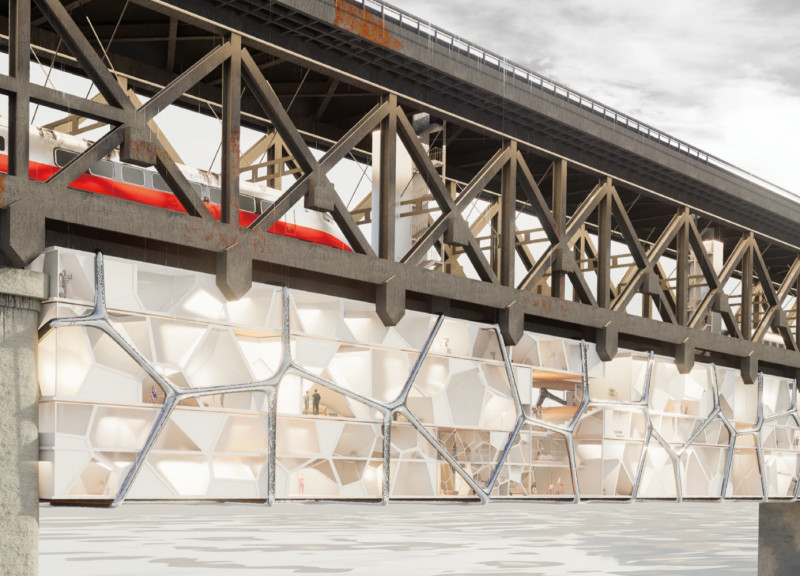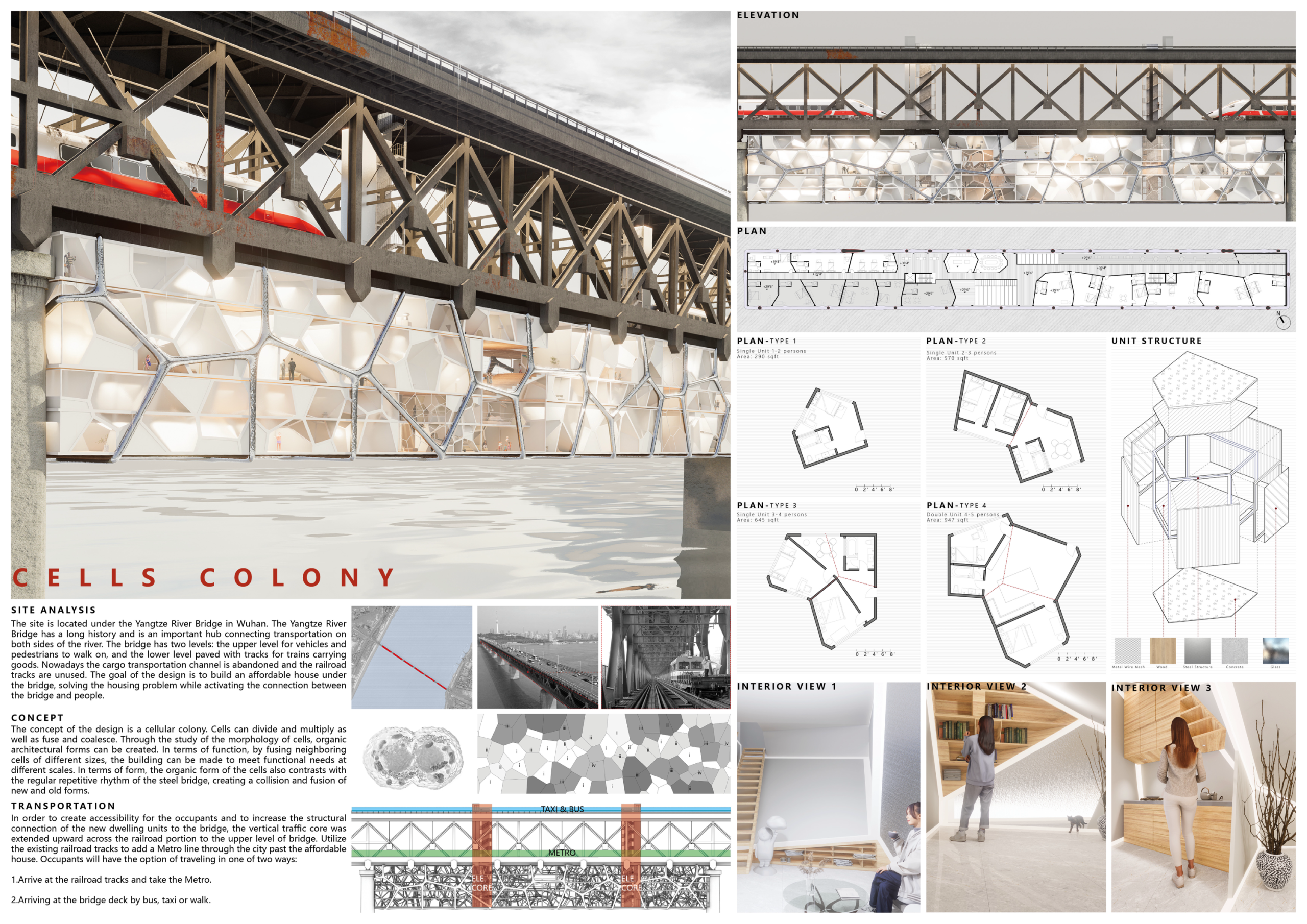5 key facts about this project
The primary function of the "Cells Colony" project is residential, aimed at providing a flexible living solution that accommodates varying family sizes and socioeconomic backgrounds. The project is not solely about individual units; it fosters an environment that encourages social engagement among residents. Each unit is carefully designed with functional adaptability in mind, supporting different lifestyles and changing family dynamics over time.
Architecturally, the project showcases a blend of innovative materials and design techniques. The exterior features transparent polycarbonate panels that allow natural light to permeate the living spaces while ensuring good thermal insulation. This material choice not only enhances the aesthetic appeal of the project but also contributes to energy efficiency, aligning with sustainable design principles. Complementing this are steel frameworks that provide structural support, offering durability while echoing the industrial aesthetics of the nearby bridge infrastructure.
Inside, the design emphasizes functionality and warmth through the inclusion of wooden finishes, creating a welcoming atmosphere for residents. These materials work together cohesively to establish a sense of place that feels both modern and home-like. Furthermore, reinforced concrete is employed in the foundational elements to provide stability, ensuring that the structure can withstand environmental factors typically associated with its unique location.
The planning of the units demonstrates a thoughtful approach to living needs. The designs feature a range of unit types from compact studios to larger multi-room configurations. This variability is integral to fostering an inclusive community, as it allows for a range of household sizes and compositions, promoting diverse social interactions. The open floor layouts optimize the use of space, making the most of the available area while accommodating contemporary living practices.
A notable aspect of "Cells Colony" is its focus on communal spaces. The design incorporates shared facilities and green areas that encourage residents to interact with one another, enriching the community experience. This attention to social connectivity is critical in urban environments, where residents often seek a sense of belonging amidst the hustle and bustle of city life. By situating these communal facilities strategically within the site, the project not only enhances the residents' quality of life but also integrates seamlessly with the surrounding urban context.
What sets "Cells Colony" apart from traditional residential projects is its unique approach to spatial organization and community-oriented design. The concept of merging individual units with shared communal areas challenges conventional notions of urban living, allowing for a high level of interaction without compromising privacy. This duality of community and personal space reflects a sophisticated understanding of contemporary urban issues, including the need for livable, adaptable environments in dense cityscapes.
Anyone interested in exploring the nuances of this architectural project is encouraged to delve deeper into its architectural plans, sections, and designs. By examining these elements, readers can gain a comprehensive understanding of how "Cells Colony" addresses the complexities of modern living while contributing significantly to the architectural landscape of Wuhan. The project invites further discussion and exploration, highlighting the potential of innovative architectural ideas to reshape urban living.























